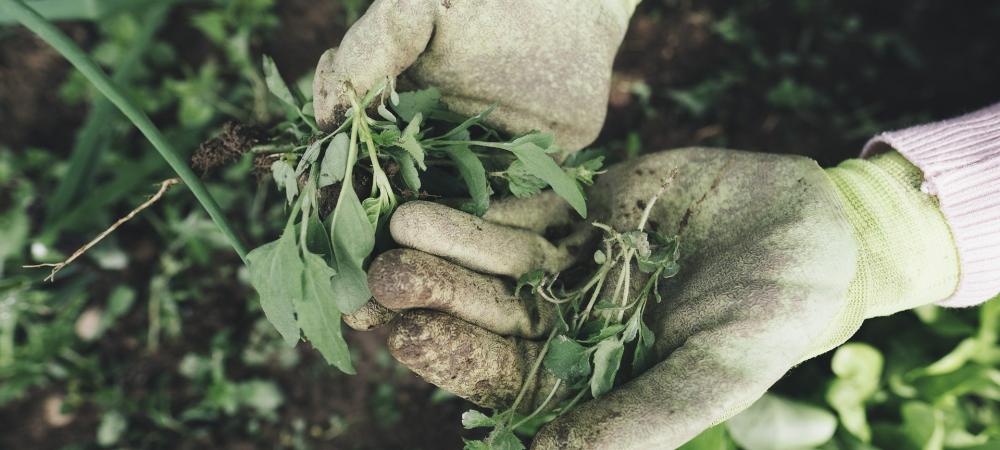North Carolina’s diverse climate and soil conditions make it an ideal environment for various plant species, including weeds. Understanding the most common weeds in the state, their characteristics, preferred conditions, and effective control methods is essential for maintaining a healthy and vibrant landscape. In this blog, we will explore some of the prevalent types of weeds in North Carolina, providing detailed information to help you identify, manage, and control them effectively.
The most common types of weeds in NC include:
- Crabgrass
- Dandelion
- Clover
- Chickweed
- Bermudagrass
- Oxalis
- Broadleaf Plantain
- Ground Ivy
- Spurge
- Japanese Stiltgrass
- Wild Violet
- Spurweed
- Henbit
- Yellow Nutsedge
- Poa Annua
- Scutch Grass
- Purple Deadnettle
Crabgrass (Digitaria spp.)
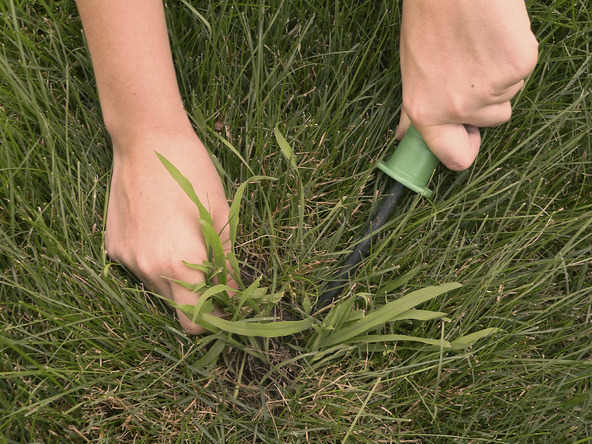
- Description: Crabgrass is an annual grass with wide, flat blades and distinctive finger-like spikes. It forms dense mats that can quickly take over lawns and gardens.
- Preferred Conditions: Thrives in warm-season grasses and disturbed soil. Poorly maintained lawns and overwatered areas are especially susceptible.
- Time of Year: Crabgrass germinates in late spring and early summer.
- How to Get Rid of Crabgrass: Use pre-emergent herbicides in early spring to prevent germination. Improve lawn health by proper watering, mowing, and fertilization.
Dandelion (Taraxacum officinale)
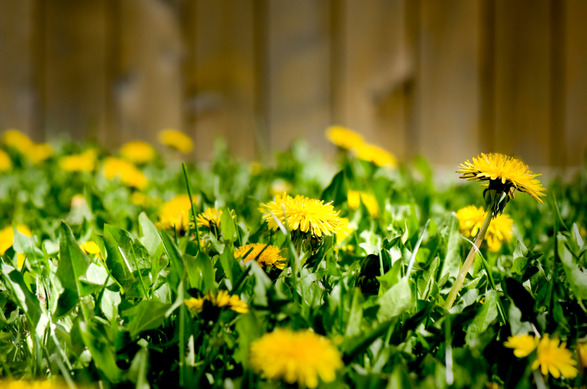
- Description: Dandelions are broadleaf perennial weeds with bright yellow flowers and characteristic fluffy seed heads.
- Preferred Conditions: Flourishes in a variety of soils but particularly in nutrient-rich, well-drained areas.
- Time of Year: Dandelions can appear throughout the year, but they are most noticeable in spring.-
- How to Get Rid of Dandelion: Hand pulling or use of broadleaf herbicides. Regular lawn maintenance practices, such as aeration and proper fertilization, can also help prevent their growth.
Clover (Trifolium spp.)
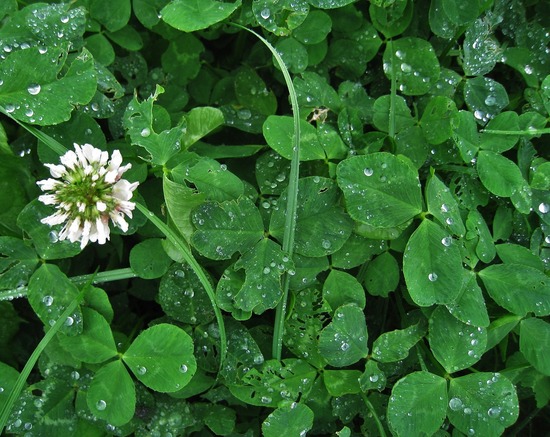
- Description: Clover is a broadleaf perennial with distinctive three-lobed leaves and small white or pink flowers.
- Preferred Conditions: Thrives in nitrogen-deficient soil and is often found in lawns with poor fertility.
- Time of Year: Clover is most active in spring and early summer.
- How to Get Rid of Clover: Improve soil fertility through proper fertilization. Use broadleaf herbicides if necessary, and ensure proper lawn care practices.
Common Chickweed (Stellaria media)
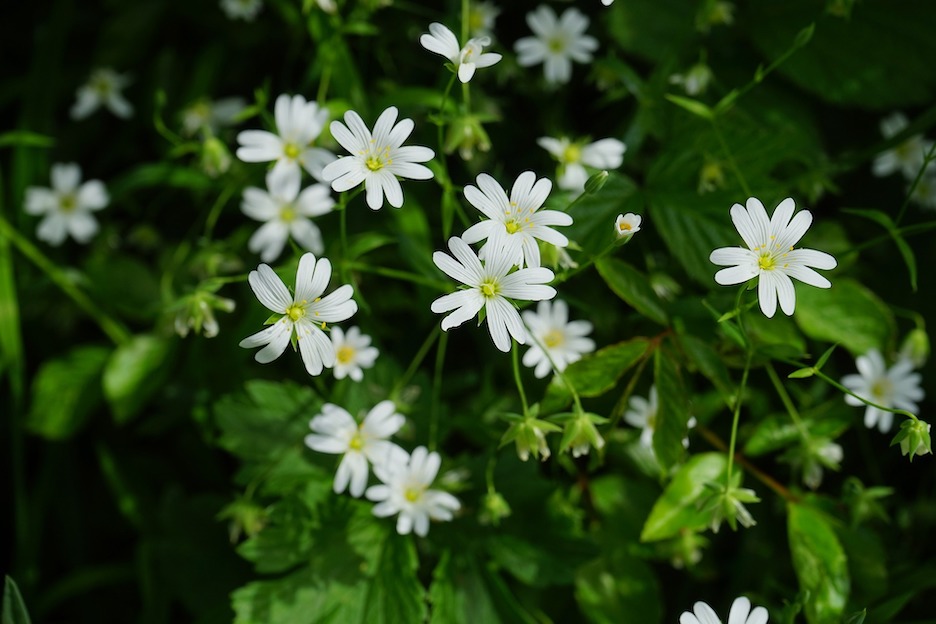
- Description: Chickweed is a low-growing winter annual with opposite, egg-shaped leaves and small white flowers.
- Preferred Conditions: Thrives in cool, moist conditions and is commonly found in lawns, garden beds, and shady areas.
- Time of Year: Active in late fall, winter, and early spring.
- How to Get Rid of Chickweed: Manual removal, mulching, and herbicides designed for broadleaf weeds. Improving drainage and reducing shade can also help control chickweed.
Bermudagrass (Cynodon dactylon)
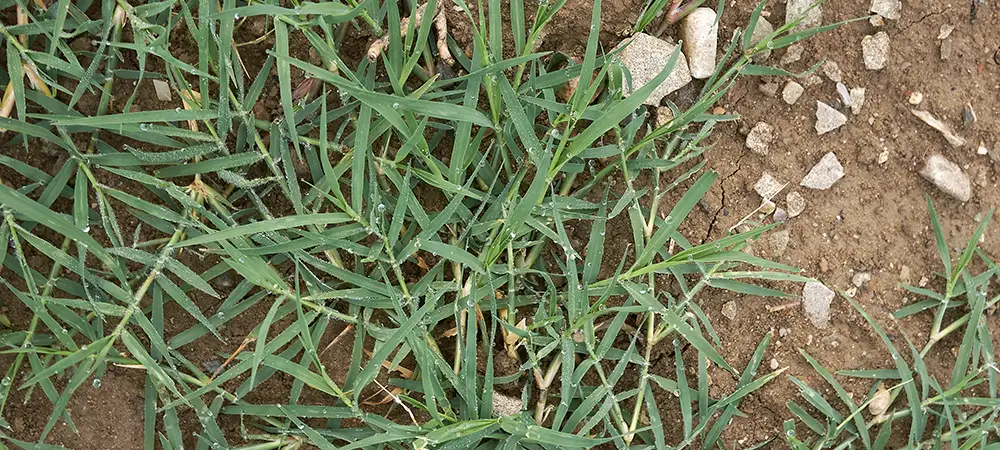
- Description: Bermudagrass is a warm-season perennial grass with fine-textured blades and spreading growth habit.
- Preferred Conditions: Thrives in full sun and well-drained soil, often becoming invasive in lawns and gardens.
- Time of Year: Bermudagrass is most active in late spring and summer.
- How to Get Rid of Bermudagrass: Use selective herbicides designed for warm-season grass control. Regular mowing and proper lawn care practices can help suppress its growth.
Oxalis (Oxalis spp.)
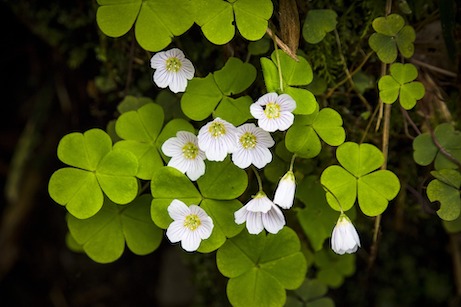
- Description: Oxalis, or wood sorrel, is a low-growing perennial with heart-shaped leaves and small yellow flowers.
- Preferred Conditions: Prefers acidic soils and can be found in lawns, gardens, and disturbed areas.
- Time of Year: Oxalis is active in spring and early summer.
- How to Get Rid of Oxalis: Hand pulling, use of broadleaf herbicides, and soil amendments to adjust pH levels.
Plantain (Plantago spp.)
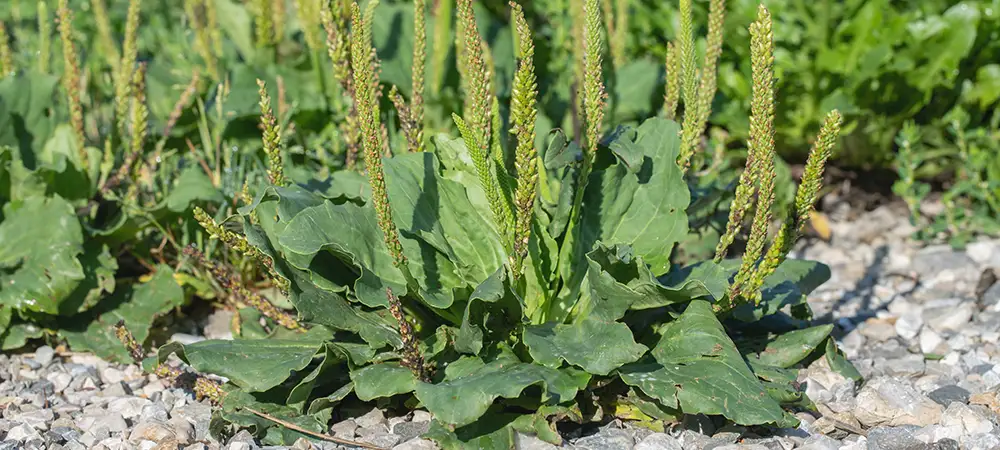
- Description: Plantain is a broadleaf perennial with ribbed leaves and inconspicuous flowers on tall spikes.
- Preferred Conditions: Grows in compacted soils and disturbed areas, often seen in lawns and pathways.
- Time of Year: Plantain is active throughout the growing season.
- How to Get Rid of Plantain: Manual removal, use of broadleaf herbicides, and improving soil aeration.
Ground Ivy (Glechoma hederacea)
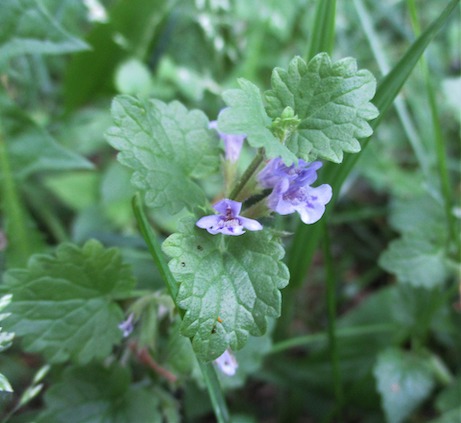
- Description: Ground Ivy, also known as creeping Charlie, is a low-growing, trailing perennial with scalloped leaves and small purple flowers.
- Preferred Conditions: Thrives in shaded, damp areas and often invades lawns and gardens.
- Time of Year: Ground Ivy is active in spring and fall.
- How to Get Rid of Ground Ivy: Use broadleaf herbicides, regular mowing, and increase sunlight exposure in affected areas.
Spurge (Euphorbia spp.)
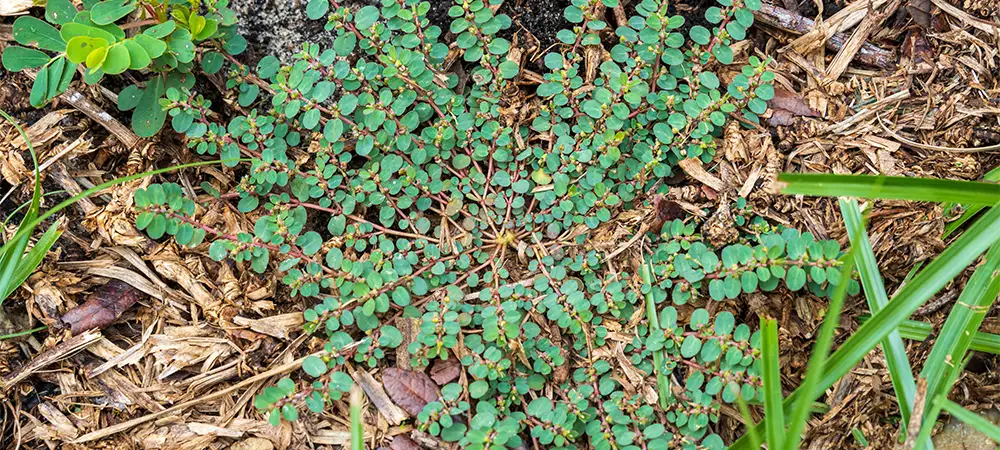
- Description: Spurge is a low-growing annual or perennial with succulent leaves and small, inconspicuous flowers.
- Preferred Conditions: Grows in dry, sandy soils and is common in lawns and garden beds.
- Time of Year: Spurge is active in late spring and summer.
- How to Get Rid of Spurge: Hand pulling, mulching, and selective herbicides for broadleaf weeds.
Japanese Stiltgrass (Microstegium vimineum)
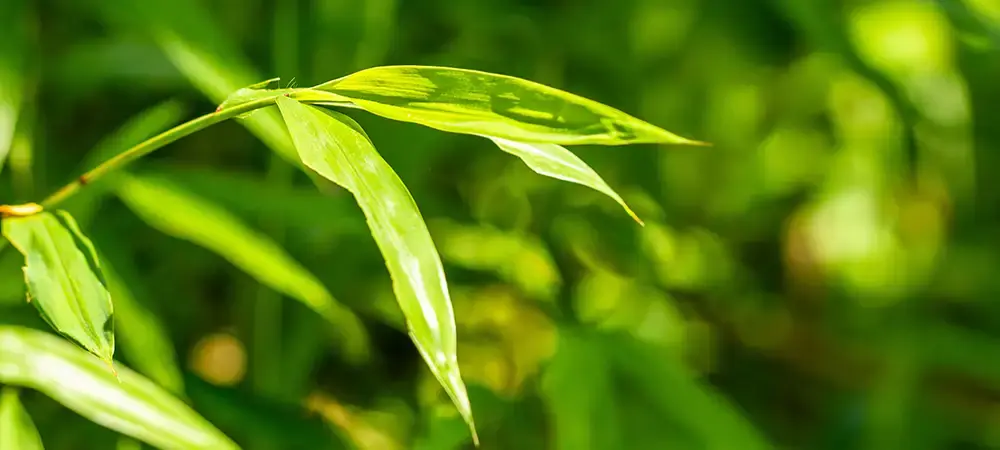
- Description: Japanese stiltgrass is an invasive annual grass with bamboo-like stems and pale green leaves.
- Preferred Conditions: Thrives in shaded areas and disturbed soil.
- Time of Year: Active in late spring and summer.
- How to Get Rid of Japanese Stiltgrass: Hand pulling, mowing before seed set, and use of pre-emergent herbicides.
Wild Violet (Viola spp.)
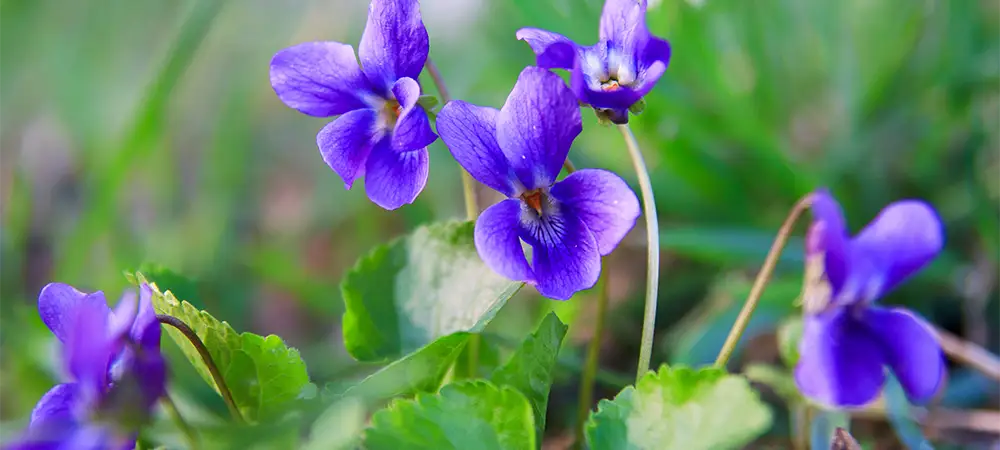
- Description: Wild violet is a perennial with heart-shaped leaves and distinctive purple or white flowers.
- Preferred Conditions: Grows in shaded or moist areas, often invading lawns and garden beds.
- Time of Year: Active in spring and early summer.
- How to Get Rid of Wild Violet: Use broadleaf herbicides and improve lawn health through proper maintenance.
Spurweed (Soliva sessilis)
- Description: Spurweed, also known as stickers or burweed, is an annual with spiny fruits and small, yellow flowers.
- Preferred Conditions: Grows in sandy soils and is common in lawns and open areas.
- Time of Year: Active in late spring and summer.
- How to Get Rid of Spurweed: Hand pulling, use of pre-emergent herbicides, and maintaining a healthy lawn.
Henbit (Lamium amplexicaule)
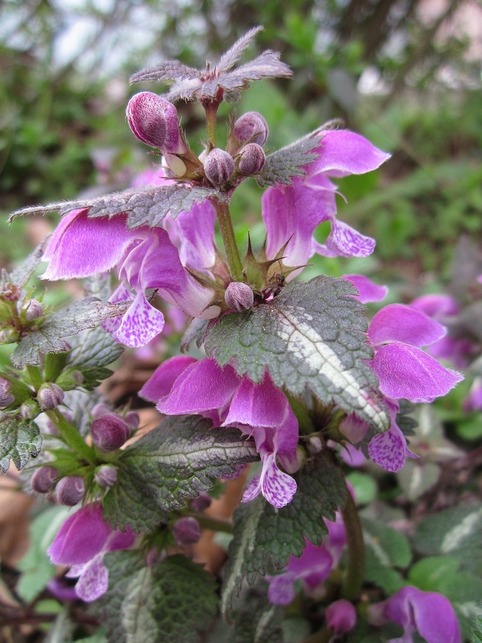
- Description: Henbit is a winter annual with square stems, scalloped leaves, and tubular purple flowers.
- Preferred Conditions: Thrives in cool-season grasses and disturbed areas.
- Time of Year: Active in late fall, winter, and early spring.
- How to Get Rid of Henbit: Hand pulling, mowing before flowering, and use of broadleaf herbicides.
Yellow Nutsedge (Cyperus esculentus)
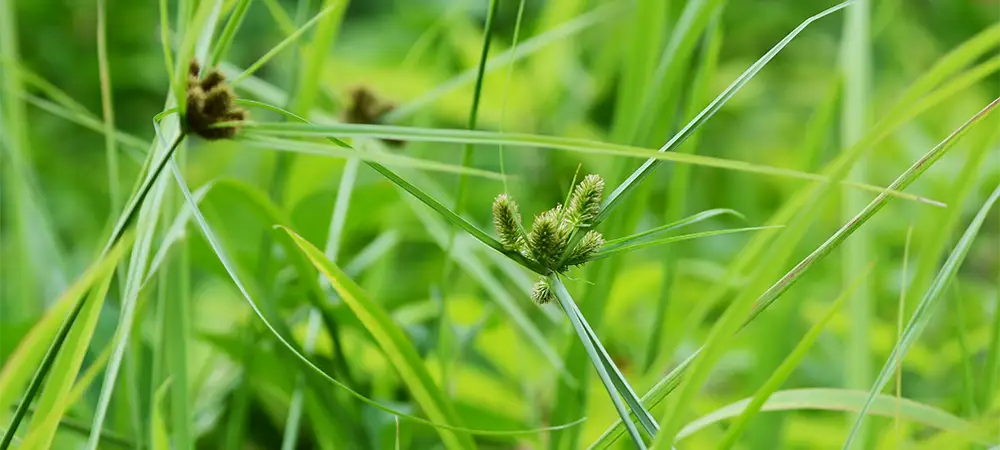
- Description: Yellow nutsedge, also known as nutgrass, is a perennial with triangular stems and yellow-brown flowers.
- Preferred Conditions: Thrives in wet or poorly drained soils, commonly found in lawns and gardens.
- Time of Year: Active during warm summer months.
- How to Get Rid of Yellow Nutsedge: Use nutsedge-specific herbicides, improve drainage, and avoid overwatering.
Poa Annua (Poa annua)
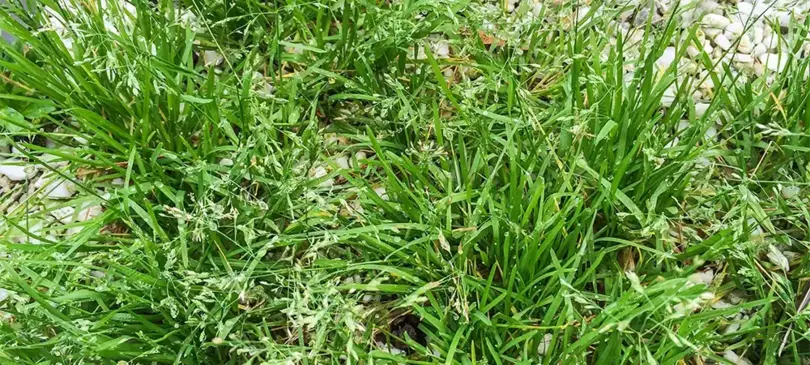
- Description: Poa Annua, also known as annual bluegrass, is a cool-season annual grass with boat-shaped leaf tips and a distinctive boat-like seed head. Learn more on how to identify Poa Annua.
- Preferred Conditions: Thrives in cool, moist conditions and is commonly found in lawns, golf courses, and athletic fields.
- Time of Year: Active during fall, winter, and spring, with seeds germinating in late summer or early fall.
- How to Get Rid of Poa Annua: Proper lawn maintenance practices, such as overseeding with desirable grasses, can help suppress Poa Annua. Additionally, pre-emergent herbicides applied in the fall can prevent seed germination.
Scutch Grass (Elymus repens)
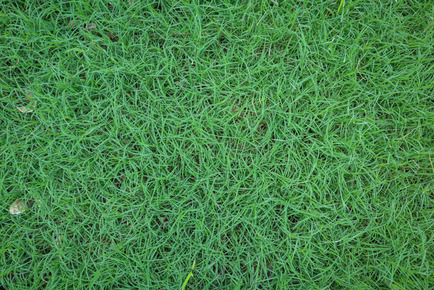
- Description: Scutch Grass, also known as couch grass, quick grass, twitch grass, or quackgrass, is a perennial grass with creeping rhizomes, flat stems, and wide, rough leaves.
- Preferred Conditions: Adaptable to various soil types, scutch grass is commonly found in lawns, gardens, and disturbed areas.
- Time of Year: Active throughout the growing season, with aggressive growth in spring and summer.
- How to Get Rid of Scutch Grass: Managing scutch grass is challenging due to its rhizomatous nature. Regular mowing, hand pulling, and the use of non-selective herbicides can be effective. Persistent control measures are often necessary to prevent regrowth from rhizomes.
Purple Deadnettle (Lamium purpureum)
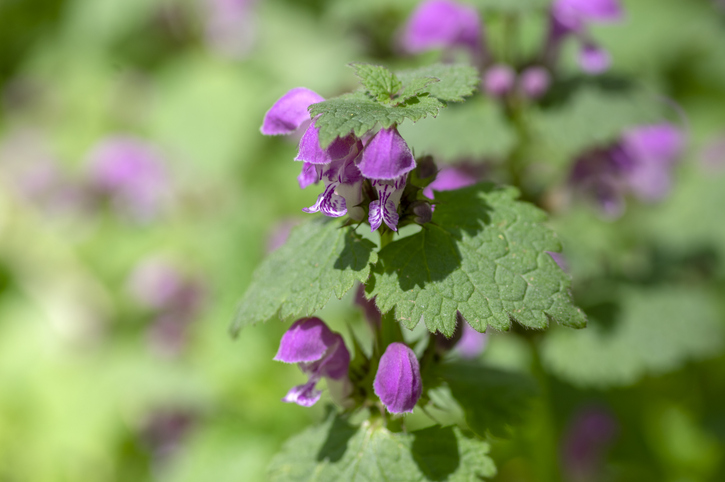
- Description: Purple Deadnettle is a winter annual with square stems, heart-shaped leaves, and vibrant purple flowers. It is closely related to henbit.
- Preferred Conditions: Thrives in cool, moist conditions and is commonly found in lawns, garden beds, and disturbed areas.
- Time of Year: Active in late fall, winter, and early spring.
- How to Get Rid of Purple Deadnettle: Manual removal, mulching, and the use of pre-emergent herbicides can be effective against Purple Deadnettle. Maintaining a healthy lawn through proper fertilization and aeration can also help prevent its establishment.
Call Lawn Care Professionals
Maintaining a weed-free landscape in North Carolina requires a combination of proper lawn care practices, timely identification, and effective control methods. But DIY weed control doesn’t always do the job – that’s where Triangle Lawn Care comes in. With our targeted and effective weed control treatments, we can ensure that your yard stays free of perennial and annual weeds. Contact us today to schedule your yard inspection!


